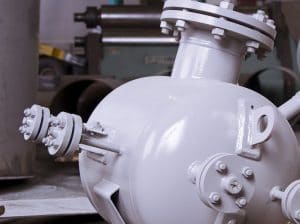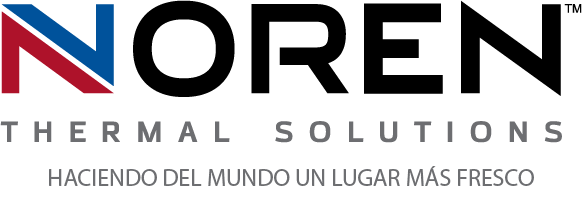 Heat exchangers have long been an important part of many companies’ thermal management processes, and for many good reasons. However, before they became popular, industries first had to let go of several misconceptions they held about electrical thermal management. For example, it was once believed that the only way to effectively prevent an electrical enclosure from overheating is to keep the air inside of it chilled. Otherwise, the waste heat would quickly damage the components inside. As heat exchangers proved, this isn’t always he case, as the innovative thermal management solutions are designed to transfer electrical waste instead, using an eco-friendly cooling fluid to accomplish it.
Heat exchangers have long been an important part of many companies’ thermal management processes, and for many good reasons. However, before they became popular, industries first had to let go of several misconceptions they held about electrical thermal management. For example, it was once believed that the only way to effectively prevent an electrical enclosure from overheating is to keep the air inside of it chilled. Otherwise, the waste heat would quickly damage the components inside. As heat exchangers proved, this isn’t always he case, as the innovative thermal management solutions are designed to transfer electrical waste instead, using an eco-friendly cooling fluid to accomplish it.
Meeting electrical cooling challenges
The prevention of electrical overheating is the main goal of any thermal management system, but achieving that goal comes with several different challenges, many of which are unique to specific applications. For example, companies have to balance the need to properly cool their electrical equipment with the cost of doing so, such as energy and maintenance costs. They also have to consider how efficient their cooling systems are and whether or not they’ll be prone to frequent damage or malfunction. Heat exchangers meet these challenges, and more, by simplifying the way companies cool their technology.
How heat exchangers work
Heat exchangers come in many different forms, shapes, and sizes, and are designed to accommodate the needs of a wide range of electrical applications. Generally, heat exchangers are designed to facilitate the flow of an eco-friendly cooling fluid that absorbs electrical waste heat, then dissipates it once it’s safely away from the sensitive electrical components. Most common types of heat exchangers are able to keep the temperature within an enclosure at just above the ambient temperature outside of it. However, with air-to-water heat exchangers, systems can easily achieve highly efficient below-ambient cooling when necessary.
Reaching below-ambient cooling
Air-to-water heat exchangers are often utilized when applications are deployed in extremely hot climates or are designed for particularly high performance. Such applications often require below-ambient cooling solutions, and air-to-water heat exchangers can help companies avoid the need for more cumbersome air conditioning or air compressing cooling units. This means more advanced technologies and applications can enjoy the many different benefits that come with transferring electrical waste heat rather than trying to outdo it with chilled air.
For more information about the benefits of air-to-water heat exchangers, call Noren Thermal Solutions in Taylor, TX, at 866-936-6736.







